The night at Zygmuntówka was nice and calm. It was almost completely empty and I had the room for myself. A group of 3 more hikers were staying in otherwise a very busy place. Seems that the early stage of COVID-19 pandemic locked at home most of the nature enthusiasts.
The plan for that day was to reach Silver Mountain (Srebrna Góra) and have a chill afternoon filled with sightseeing of historic strongholds. The weather was supposed to be bad and unfortunately, it was. From the walking perspective, it happened to be one of the most miserable days on the track. I walked simply to cover the distance, without any views whatsoever. Just clouds, fog, rain.
Route: Zygmuntówka Hut to Silver Mountain (Srebrna Góra)
Distance: ~ 17 km
The track starts with proper ascent and after 15 minutes I had to stop to take off one layer of clothes. Hiking in this kind of weather is always weird. If you stop, you are instantly cold. If you walk, you are too warm and sweating. Well, it started to rain so I didn’t have to worry about sweating anymore.
After around 2.5 km from Zygmuntówka Hut, I reached the base of Kalenica viewing tower (964m a.s.l.). Going up was pointless, especially that I could hardly see the top of it in the fog. But I did go, maybe stupidly thinking that the clouds would magically disappear. They didn’t (surprise, surprise).
Next 5 km of descent towards Woliborska Pass (Przełęcz Woliborska, 711m a.s.l.) leads me through Popielak (856m a.s.l.) and Wigancicka Lea (Wigancicka Polanka, 794m a.s.l.).
It’s a crossroad with road 384 and there is parking for day walkers. However, for normal people, the day like that is usually a series or movie day, with hot tea and snacks on a comfortable couch, rather than hiking.
I warmed up again when going up towards Szeroka (826m a.s.l.), after which the track descents to Under the Szeroka Pass (Przełęcz pod Szeroką, 764m a.s.l.). It goes through the forest all the time and besides one lost opportunity to admire the views at Kalenica viewing tower, I probably didn’t miss a lot even with the fog around.
Ahh… and you may wonder why there are no pictures so far, but my camera was deep in the backpack, secured with a plastic bag.
It’s another ~1km to Malinowa (839m a.s.l.) from where it’s easy and gentle downhill walk all the way (~6km) to SIlver Pass (Przełęcz Srebrna, 568m a.s.l.). The famous fortress is just on my left side but being soaked isn’t nice, therefore my idea is to go to the hotel first, put on some dry clothes and go out for sightseeing. To do that, it’s time to leave red track and follow an asphalt road towards the town centre.
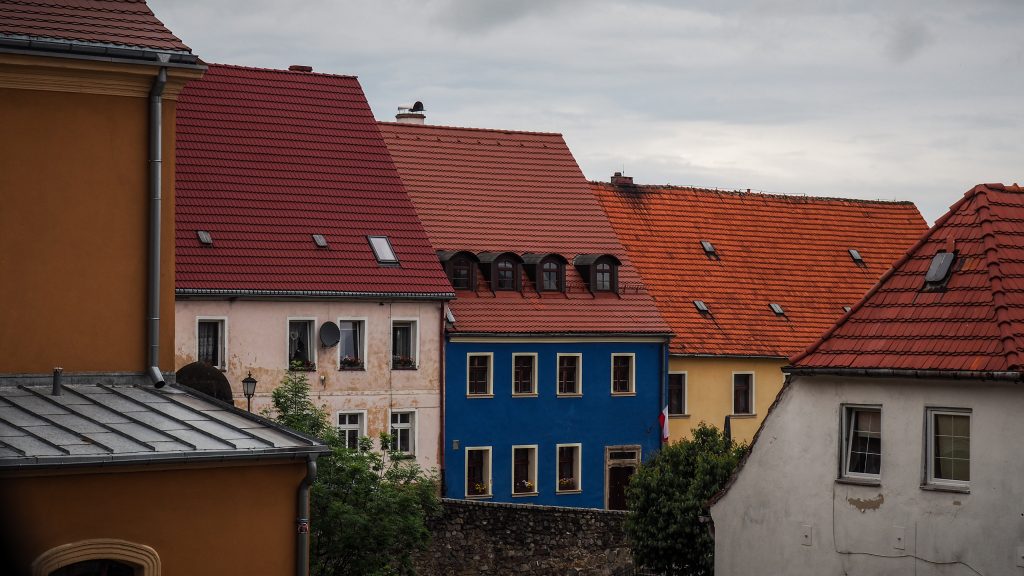
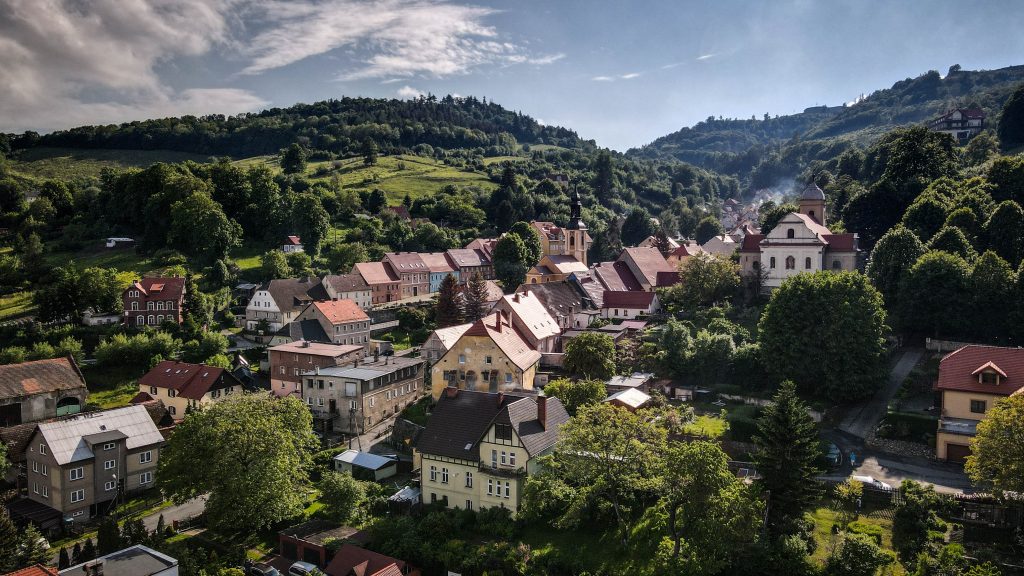
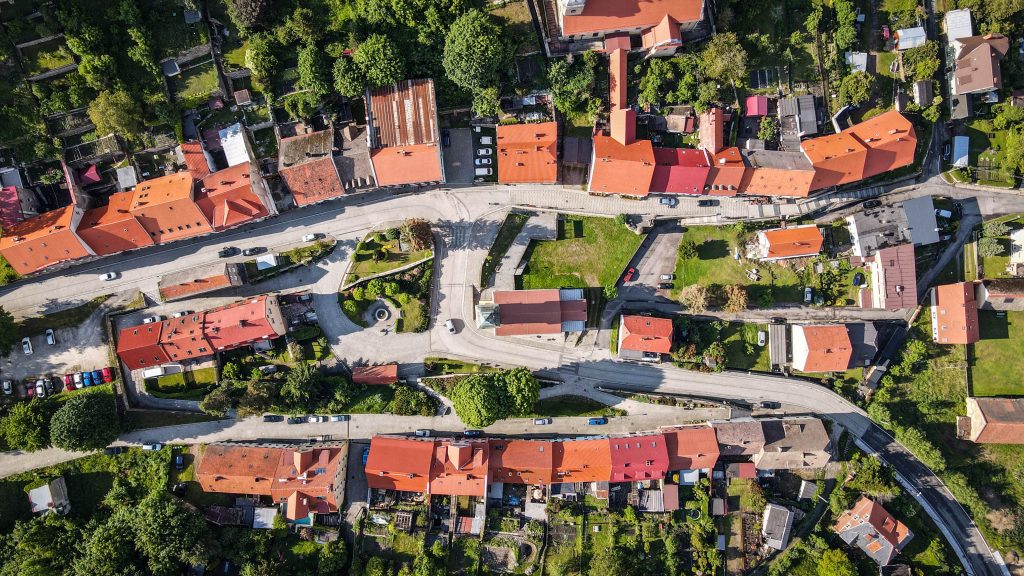
Holiday House “Under Forts” (Pod Fortami) at Widokowa 1 street was reasonably priced and had quite good reviews. The owner was really nice too and she offered to take my wet shoes and put it next to the heating to dry faster. Nothing is worse than wet shoes, so I was sooo grateful!
What to see in Silver Mountain (Srebrna Góra)
After a ridiculously long hot shower, it was time to see what the town stretched along a steep valley has to offer. Its name comes from the silver deposits discovered in this area, which unfortunately were not very abundant.
Fortresses complex is open for tourists and makes the town a very popular one on the itinerary around the Lower Silesia region in Poland. You can get combined ticked for 34 PLN to access two major forts (doesn’t have to be on the same day).
Fort Silver Mountain
A huge number of Prussian workers were employed for its construction (4,000 people supported by the local population) which took only 12 years (1765-1777). The attack of Napoleon’s army in 1807 was repulsed and Silver Mountain Fortress can boast the title of never conquered. Warehouses, wells, an armoury, a chapel, a prison, a hospital, a bakery, a brewery, a craft workshop, a powder magazine – all these were located inside the Donjon, ensuring it’s self-sufficient for many months. Up to this day, it’s the largest mountain fortress in Europe.
The guided tour was on top quality and was led by a guide dressed in the uniform of a historic regiment from the Napoleonic era. She shared a lot of information about the service and life in the fortress. In the end, she demonstrated a shot from a firearm. How loud it was! Hard to imagine being inside the fortress during the real battle.
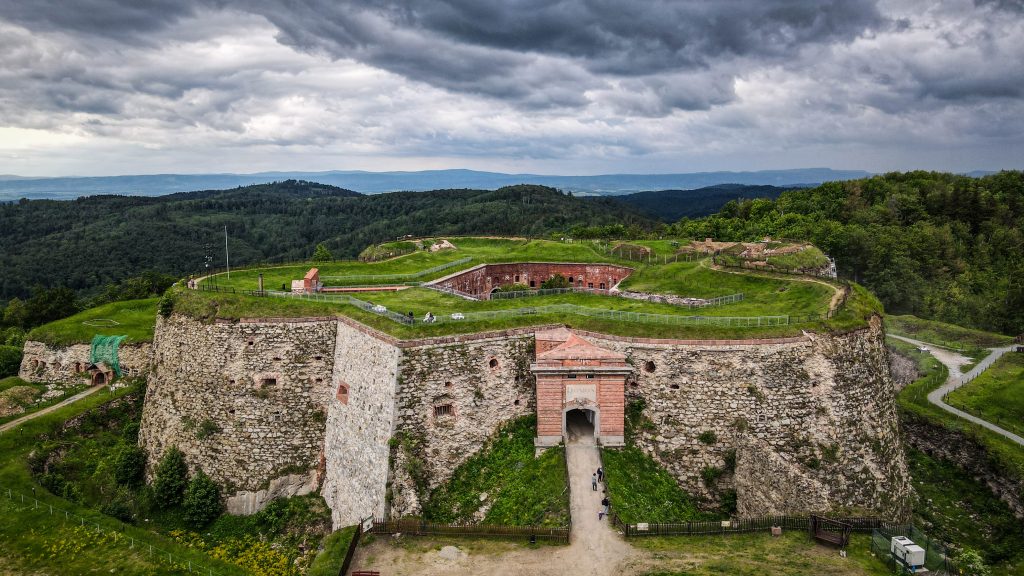
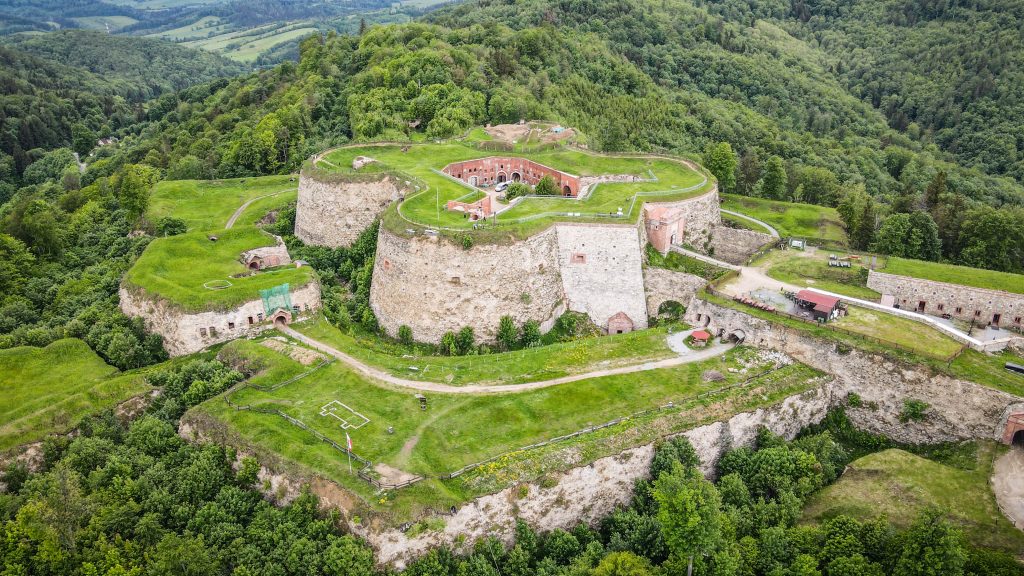

Fort Spitzberg-Ostróg
It was built in 1769-72 on the top of the Ostróg Mountain (627 m a.s.l.) with the main objective to block the Silver Pass and defend the southern flank of the main fort. Today it can be visited with a guide, who is quite a good actor and make the experience very enjoyable. In the 1930s the place was the training centre for Hitlerjugend while in the period of World War II there was a rigorous prison, and later a POW (prisoners of war) camp for high officers of the Polish Army.
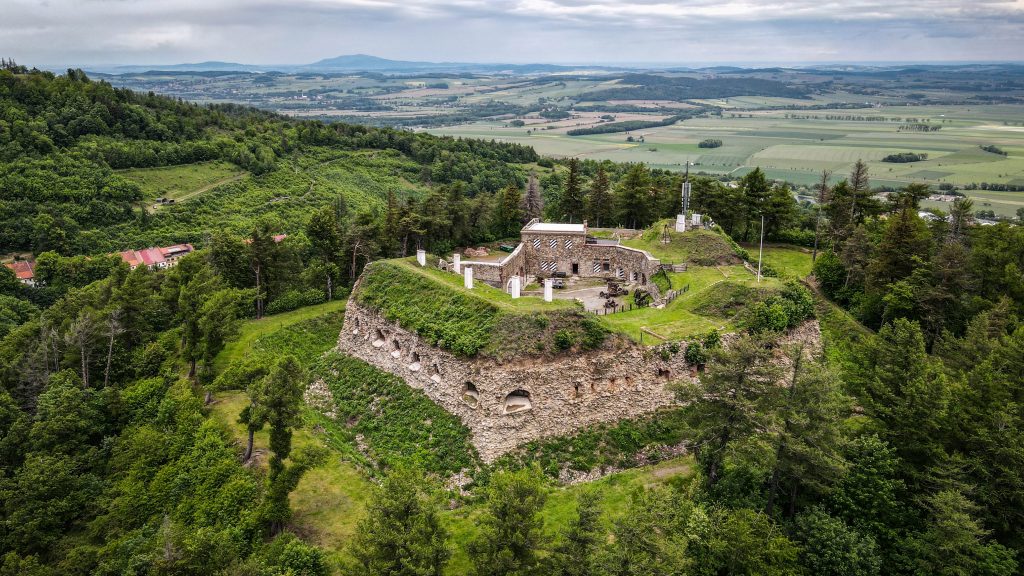
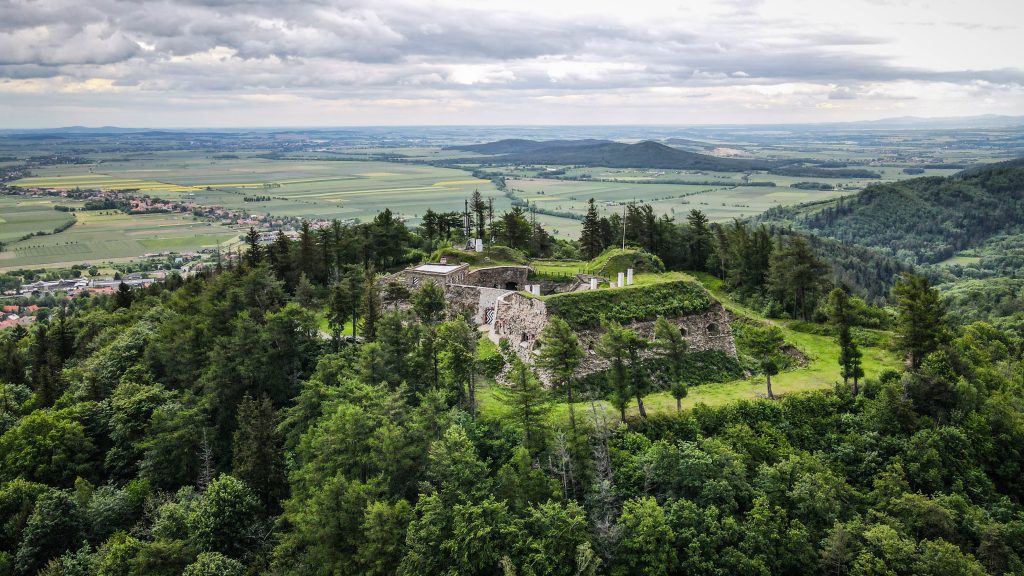
Fort High Rock
The least popular and impressive from all the forts in Silver Mountain. The purpose of it was to defend the approach the main fort and to control the town and the surrounding hills. It has been recently renovated and should be accessible for tourists, but I skipped it that time.
Viaducts of the Owl Mountains Railway
The Sowiogórska Railway was established in 1902, led from Dzierżoniów to Radków (55 km) through Srebrna Góra and the ridge of the Owl Mountains. It was to serve mainly as a tourist attraction, but also for the transport of coal from the mines in Słupiec and Nowa Ruda.
The section between Srebrna Góra and Woliborz required construction of two brick viaducts: Srebrnogórski and Żdanowski. The first one is easily accessible from Silver Pass and the second one is a bit further – follow the green track.
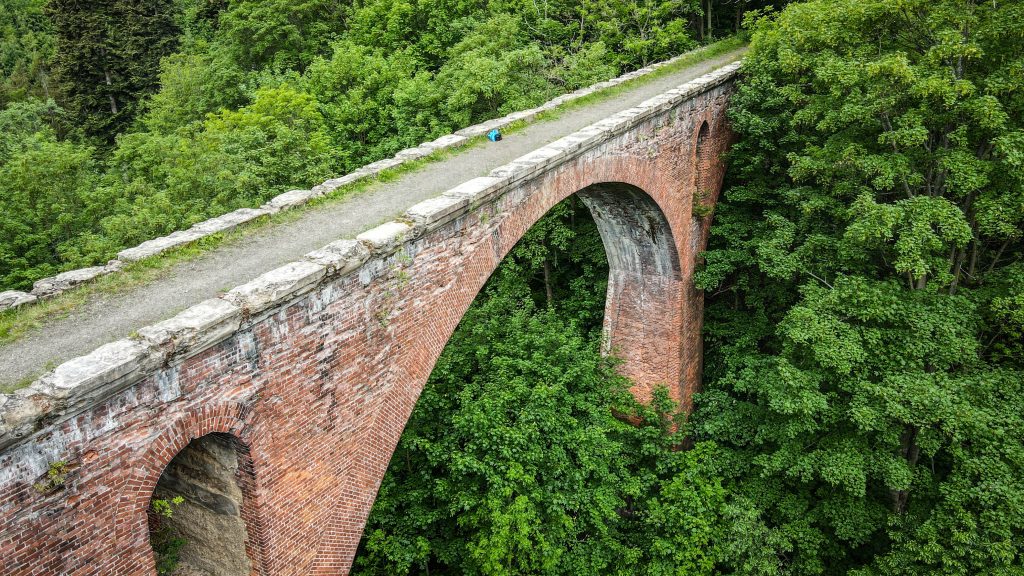
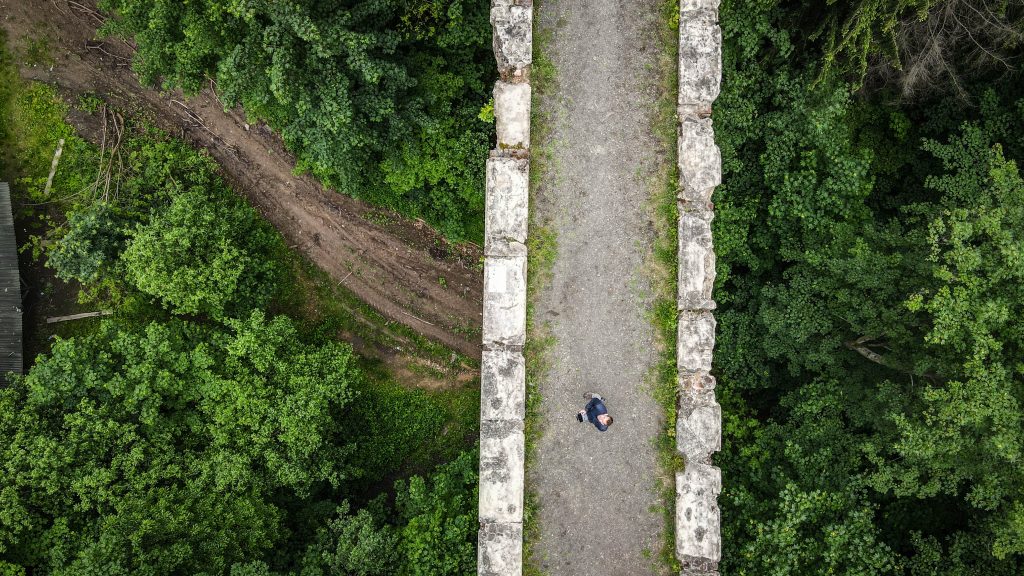
Walk around the town (church and around)
Silver Mountain is a really nice town to explore on foot, especially the area around the square with Apostles St. Peter and Paul Church.
For dinner, check out Stodoła – they have good pizzas but also salads and burgers.

